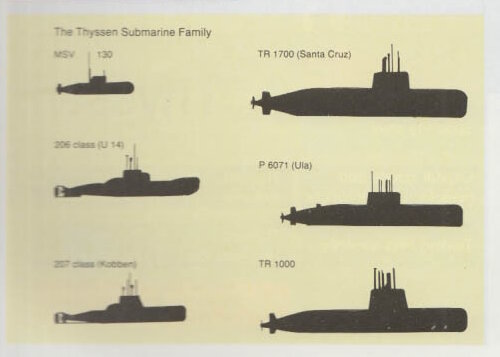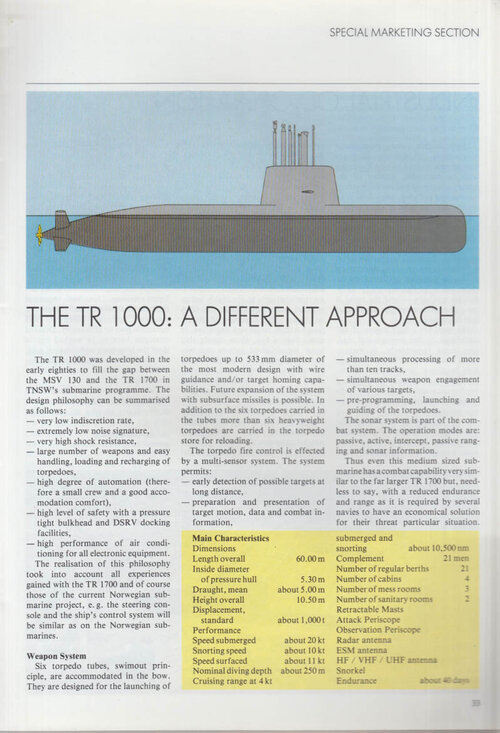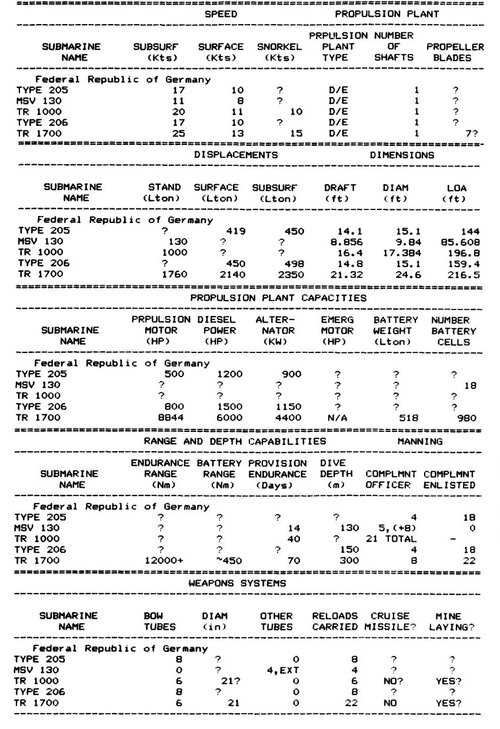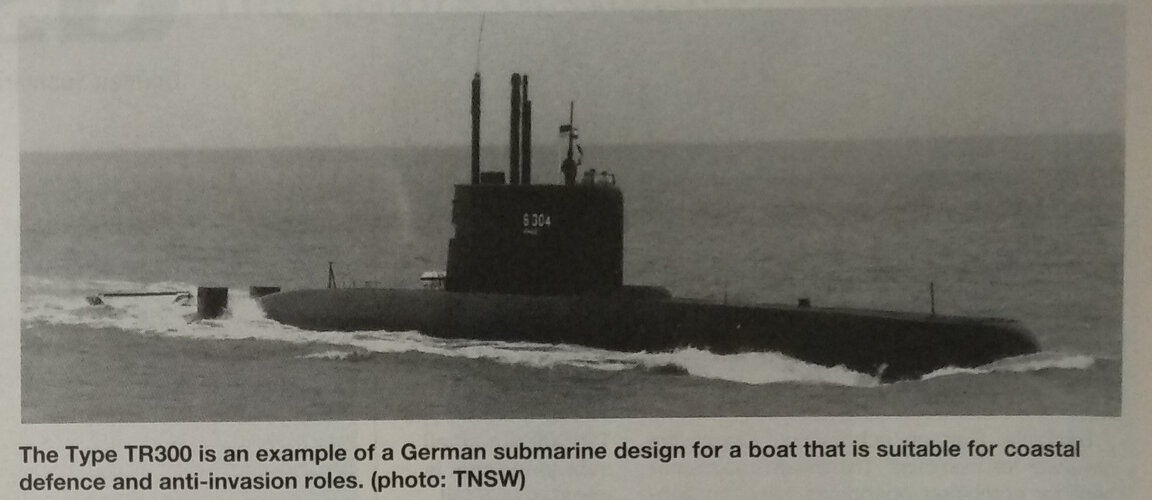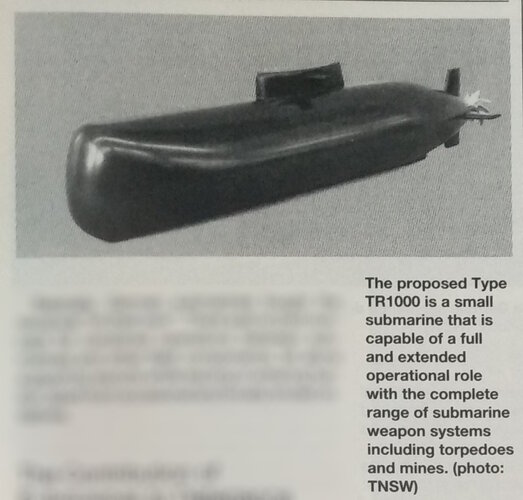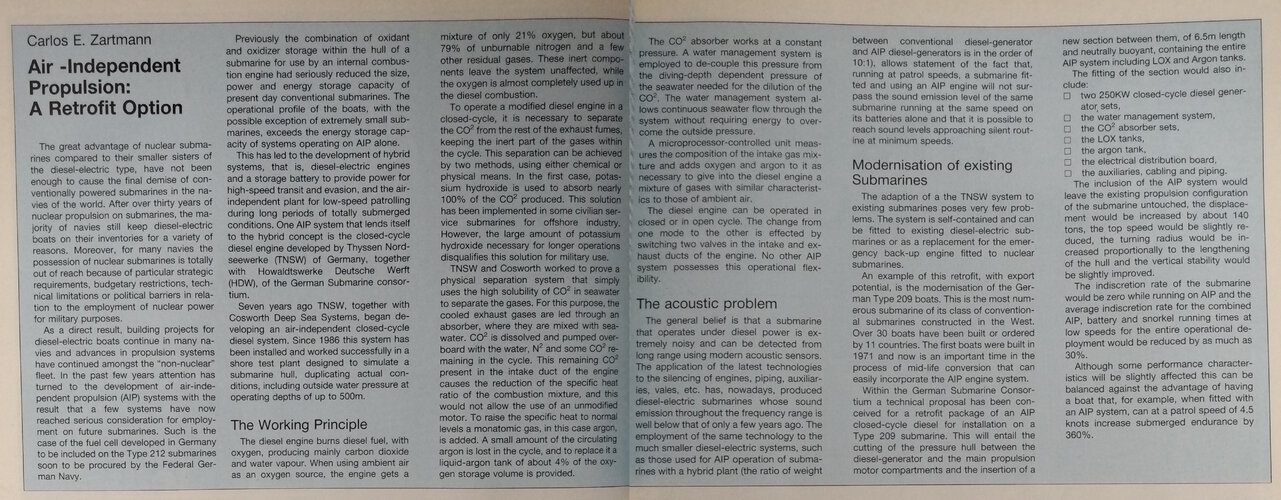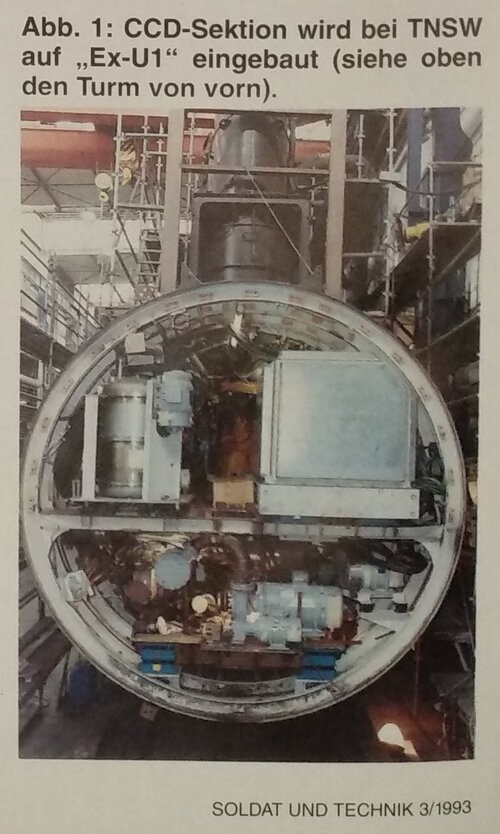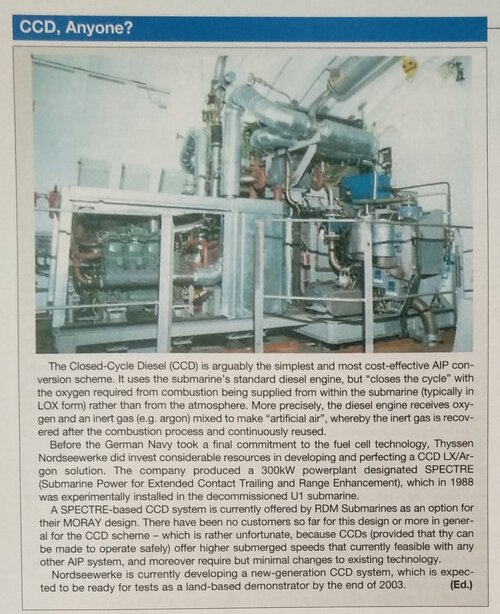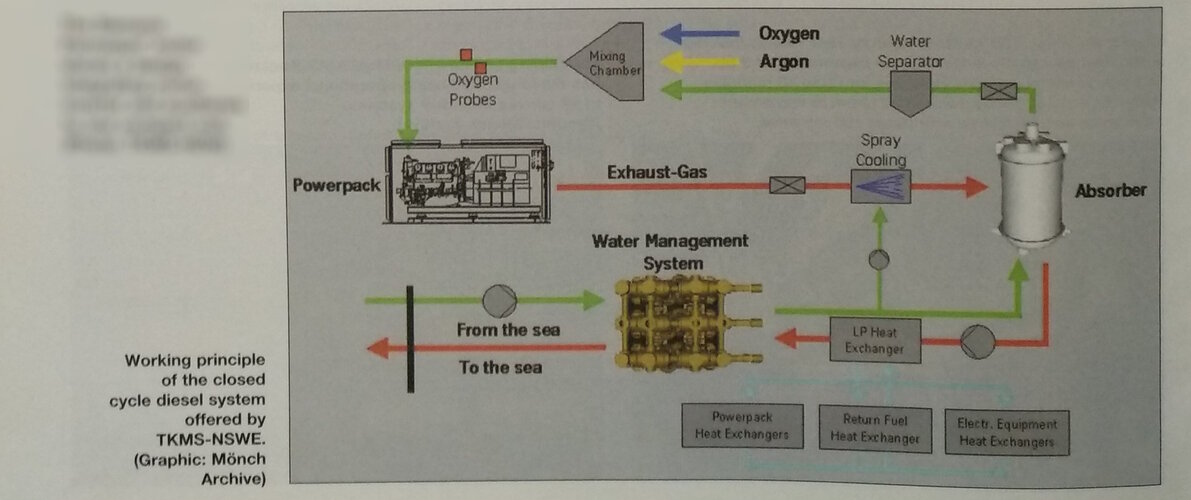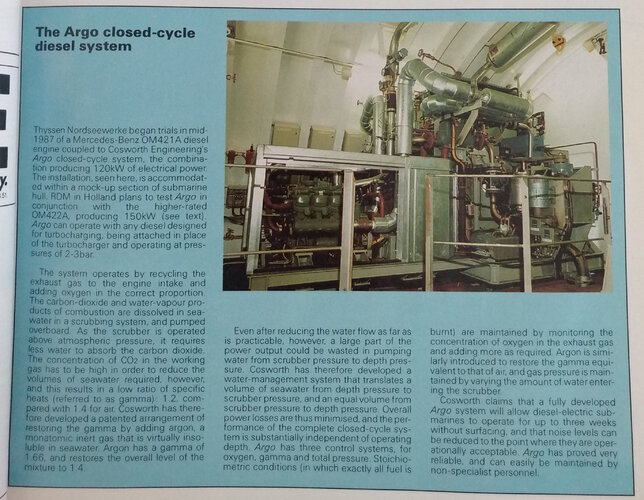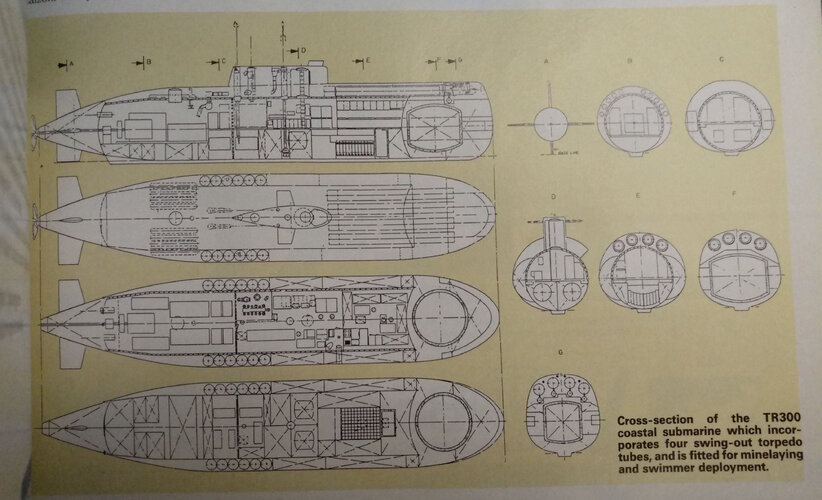Voltzz
ACCESS: Secret
- Joined
- 10 April 2021
- Messages
- 366
- Reaction score
- 1,214
NAVAL FORCES 1985 had a special supplement about Thyssen Nordseewerke including this depiction of the 'Thyssen Submarine Family' (image source)
Of the submarines shown, only MSV 130 and TR 1000 are unbuilt projects. The supplement has articles on both of these, but i can only find it for sale in the US and the preview from the seller only includes information on the TR 1000.
Comparative naval architecture of modern foreign submarines includes some data on both MSV 130 and TR 1000 (i attached the relevant parts of the table)
Beyond that, the only information on the MSV 130 i can find online is this short note from 1990 on a possible sale to Bahrain, published in documents of the German foreign office:
This note has no further information on the MSV 130, but introduces another previously unknown to me Thyssen submarine design, the TR 300.
A little more information can be found online on that submarine:
The TR 300 seems to be from the early 90s which would explain why it is not shown in the family depiction.
Also missing from the 'Submarine Family' is the MSV 75, described by H I Sutton here. That could imply thats the MSV 130 was not just a larger variant of it, but replaced the MSV 75 in the Thyssen lineup.
Of the submarines shown, only MSV 130 and TR 1000 are unbuilt projects. The supplement has articles on both of these, but i can only find it for sale in the US and the preview from the seller only includes information on the TR 1000.
Comparative naval architecture of modern foreign submarines includes some data on both MSV 130 and TR 1000 (i attached the relevant parts of the table)
Beyond that, the only information on the MSV 130 i can find online is this short note from 1990 on a possible sale to Bahrain, published in documents of the German foreign office:
SourceDivision 424 noted on 16 January 1990: "With reference to a positive decision by the BSR (Federal Security Council) in February 1988 on the delivery of 2 small submarines of the type MSV 130 to Bahrain, Thyssen Rheinstahl Technik is now submitting a preliminary enquiry for the delivery of small submarines of the (larger) type TR 300 due to the changed wishes of its customers." As the Federal Security Council had given a positive decision on the delivery of submarines to Israel, the Foreign Office was similarly in favour of approving the "export of small submarines to Bahrain". On 20 February 1990, Legation Councillor Vorwerk made a handwritten note to this effect: "Decision BSR: positive." Cf. B 70 (Ref. 424), vol. 168252.
This note has no further information on the MSV 130, but introduces another previously unknown to me Thyssen submarine design, the TR 300.
A little more information can be found online on that submarine:
SourceThyssen Nordseewerke GmbH of Germany has designed a new submarine capable of extended underwater endurance using a closedcycle diesel engine.
The 98.4-foot-long by 18.7-footbeam mini-sub, dubbed the TR-300, would displace 300 tons submerged and carry a crew of eight sailors.The dimensions give a 5:1 length-tobeam ratio which is traditional in modern German submarines.
The design would use a closedcycle diesel running on oxygen drawn from a cryogenic tank. Thyssen is known to have signed an agreement with Cosworth Deep Sea Systems of Britain to use its patented gas management system.
The Cosworth system eliminates exhaust compressors which in the past limited the depth a submarine could operate with a closed-cycle diesel. The TR-300 would have only a 45-nautical-mile (nm) range when running submerged on batteries, but a 2,000-nm submerged range when running on closed-cycle diesel.
SourceThe German submarine builder Thyssen Nordseewerke has designed the TR 300, a 35m submarine employing the TNSW/CDSS closed cycle diesel propulsion system to give air-independent (AIP) submerged cruising range of 1,350m. This is a compact 450t boat for coastal and shallow water operation, particularly optimised for warm waters. The AIP system will allow mast exposure to be minimised. A profile drawing of the submarine is given.
The TR 300 seems to be from the early 90s which would explain why it is not shown in the family depiction.
Also missing from the 'Submarine Family' is the MSV 75, described by H I Sutton here. That could imply thats the MSV 130 was not just a larger variant of it, but replaced the MSV 75 in the Thyssen lineup.

